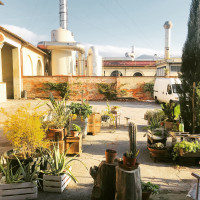
We’ve recently presented a new participative column dedicated to women: PLACES to see, WOMEN to know. Given the current context, a premise is needed.
In 2017, Hollywood divas discover they have been victims of violence by men who are more powerful than them and decide to report to the world all the abuses suffered during their careers. Stories of sex and success. Stories that make news. In fact, for months, Western media have being not talking about anything else and solidarity, on social media, is expressed with a hashtag: #metoo, it happened to me too. Females against males. Females, weak sex, victims. Everyone talks about women for all that, in a male chauvinist society, a woman is: a sexual being. For TIME, the “Silence Breakers” – the women who have broken their silence – are The Person of the Year 2017. The new year has come and three hundred “sisters” in the world of American cinema-tv-theatre come together in a Foundation that exclaims “TIME’S UP” and wants to represent all the women discriminated, harassed, assaulted, blackmailed, at work. What a good ladies! But not all agree with them: in Europe, one hundred French actresses and academics present a manifesto to “defend the right to importune, which is indispensable to sexual freedom”. Sinful females against puritan females. Females, in both cases, which are determined in relation to the other (strong or equal) sex. Everyone talks about women for all that, in a male chauvinist society, a woman is: a sexual being, passive (in the first case) or active (in the second one).
“Half victim, half accomplice, like everyone else.” as Jean-Paul Sartre would have commented. Let’s stay in Francia and go back in time. In 1949, writer and philosopher Simone de Beauvoir publishes in Paris ‘The Second Sex‘ (Le Deuxième Sexe) to try to answer two questions: what is a woman? and how can she find the freedom to solve the drama of being a woman and attain fulfilment as human being? In the introduction she writes:
“The female is a female by virtue of a certain lack of qualities,” said Aristotle; “we should regard the female nature as afflicted with a natural defectiveness.” And St Thomas for his part pronounced woman to be an “imperfect man”, an “incidental” being. This is symbolised in Genesis where Eve is depicted as made from what Bossuet called “a supernumerary bone of Adam”. Thus humanity is male and man defines woman not in herself but as relative to him; she is not regarded as an autonomous being. Michelet writes: “Woman, the relative being…” And Benda is most positive in his Rapport d’Uriel: “The body of man makes sense in itself quite apart from that of woman, whereas the latter seems wanting in significance by itself… Man can think of himself without woman. She cannot think of herself without man.” And she is simply what man decrees; thus she is called ‘the sex’, by which is meant that she appears essentially to the male as a sexual being. For him she is sex – absolute sex, no less. She is defined and differentiated with reference to man and not he with reference to her; she is the incidental, the inessential as opposed to the essential. He is the Subject, he is the Absolute – she is the Other.

The real problem is that we learn about Sartre but not about de Beauvoir. Since we are kids, our minds assume the habit of thinking about men as great intellectuals or artists or producers or managers, those who have made history. And about women as second, marginal, inferior, in any work environment, those who have remained out of history. School, university, museums, books teach this. Culture is male. Except for some “rebels” who, as exceptions, confirm a rule: then we should at least try to understand why humanity has so far obeyed this “rule” and ask why it is right or wrong. This is the male chauvinism we must fight, the thought we must revolutionise in our minds, in those of women and men.
So, let’s be clear: this new column – open to everyone’s contribution and born with the intention of telling the female protagonists of past and contemporary History through the places of our cities – has nothing to do with the current “cover feminism”, so much in vogue. Here we’ll tell you just beautiful, positive, stories of creative women who, on our Earth, more than a sign, have left a dream, a dream which can inspire other people, women and men. Stories of women who are self-determined, women who have attained fulfilment as human beings.
The reasons for this column and how to participate in the editorial project, we have already explained it here: PLACES to see, WOMEN to know. So now we just have to leave and this journey starts in Palermo, Sicily, Italy, Europe, World.
Why her? Letizia Battaglia and the International Centre for Photography in Palermo
Stories about places and women, told by you.




